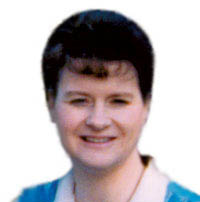How to Become a Civil Air Patrol Cadet
By Drue Porter
Printed in Practical Homeschooling #13, 1996.
 Drue and Scott Porter talk about giving your children "roots" and "wings" and introduce us to the Civil Air Patrol Cadet program.
Drue and Scott Porter talk about giving your children "roots" and "wings" and introduce us to the Civil Air Patrol Cadet program.

|
 |
 Does your son or daughter dream of a career in the military or aviation industry? Then read on - the Civil Air Patrol Cadet Program may be just the ticket for his or her future.
Does your son or daughter dream of a career in the military or aviation industry? Then read on - the Civil Air Patrol Cadet Program may be just the ticket for his or her future.
What is the Civil Air Patrol?
The Civil Air Patrol (CAP) was originally conceived during WWII by civilian aviators who recognized the significant role aircraft would play in the war and the need to use civilian air resources to patrol strategic sites. The Cadet Program was established both to meet the need for pilots and to provide the resources necessary to train them. Today, as a volunteer auxiliary of the United States Air Force, the Civil Air Patrol's mission is three-fold: "to meet civil emergencies, to encourage aerospace education of the general public, and to motivate young men and women to ideals of leadership and service through aerospace education and training." (CAPM 50-1/1Nov 1990)
The Civil Air Patrol Cadet Program, the third component of the CAP mission, is a first-rate operation that stresses discipline, encourages academic excellence, and promotes leadership while emphasizing physical fitness and moral leadership. It also provides young men and women with the opportunity to attend aerospace education classes, military-type encampments, and orientation flights. Cadets may even learn to pilot a plane once they have met certain age and proficiency requirements.
Currently, there are more than 17,000 CAP Cadets. Young men and women may join the program when they are 13 years old or have completed the 6th grade. They may continue as cadets until they are 18, at which time they become eligible to join the Civil Air Patrol as senior (adult) members.
A Cadet's Life
A cadet's introduction to the Civil Air Patrol begins with a three-month preparatory period in which he or she learns about the program before deciding to join. Potential cadets are able to see first-hand how the weekly meetings are run. They attend classes and get to know the members of the squadron.
Once a young person joins the Cadet program, they must conform to military dress and grooming standards during official CAP activities. Cadets wear blue Air Force uniforms and BDU's (battle dress uniforms) with Civil Air Patrol insignia and patches. Much emphasis is given to uniform care and neatness. Shirts are ironed and shoes are shined. Young men have military haircuts and young women wear their hair in an acceptable military style.
From this point, cadets, with the guidance of senior CAP members and more advanced cadets, work through 15 steps of a four-phase program in which they earn rank and seniority in their squadron. This is carried out during the weekly meetings and through individual study and testing. They learn to drill and are taught military decorum. In the aerospace classes, they learn how an airplane works and the physics behind flying. They learn about aerospace history and careers in the aviation industry. In the leadership classes, cadets are taught how to lead, follow, and be part of a chain of command. They learn responsibility, both personal and towards others. They are taught how to motivate and work with others with consideration and integrity.
What the CAP Can Do for You
It may sound as though the CAP Cadet program is all work and no play. While it is true that the cadets put in a lot of hard work, they also have a lot of fun. Cadets learn model rocketry, take field trips to aerospace museums, and go on weekend encampments (see my son Scott's article on page 21). Cadets may fly aboard military aircraft as part of the flight orientation program. They may also attend week-long encampments during the summer, learning such skills as ground search and rescue.
Of particular interest to homeschoolers is the emphasis placed on academic excellence, especially in the areas of math and science. The aerospace program is an outstanding supplement to math and science curricula, allowing students to practically apply what they have learned. Cadets are taught by qualified CAP members and are given the opportunity to meet and learn from professional military personnel. The CAP Cadet Program stresses high moral standards and integrity among its members and safety in its flight orientation program.
Also noteworthy is the edge CAP membership gives cadets in pursuing future career goals. Civil Air Patrol Cadets who choose to serve in the military or attend a service academy after high school have an advantage over their peers. Currently, those cadets who enlist in the Air Force may join as Airmen First Class (E-3) rather than Airmen Basic (E-1). For those who hope to attend one of the service academies, it is significant that 8 to 10 percent of the US Air Force Academy class is typically made up of former CAP Cadets.
For More Information
To learn more about the Civil Air Patrol Cadet Program or to locate the CAP squadron nearest you, call 1-800-359-2338 or visit the Civil Air Patrol National Headquarters web site.
For statistical data cited in this article see CAP Web pages at the following addresses:
http://www.norwich.net/~jones/cap/cadet/cadet.htm
http://www.cap.af.mil/nhq/pa/50-2/missions-cp.html